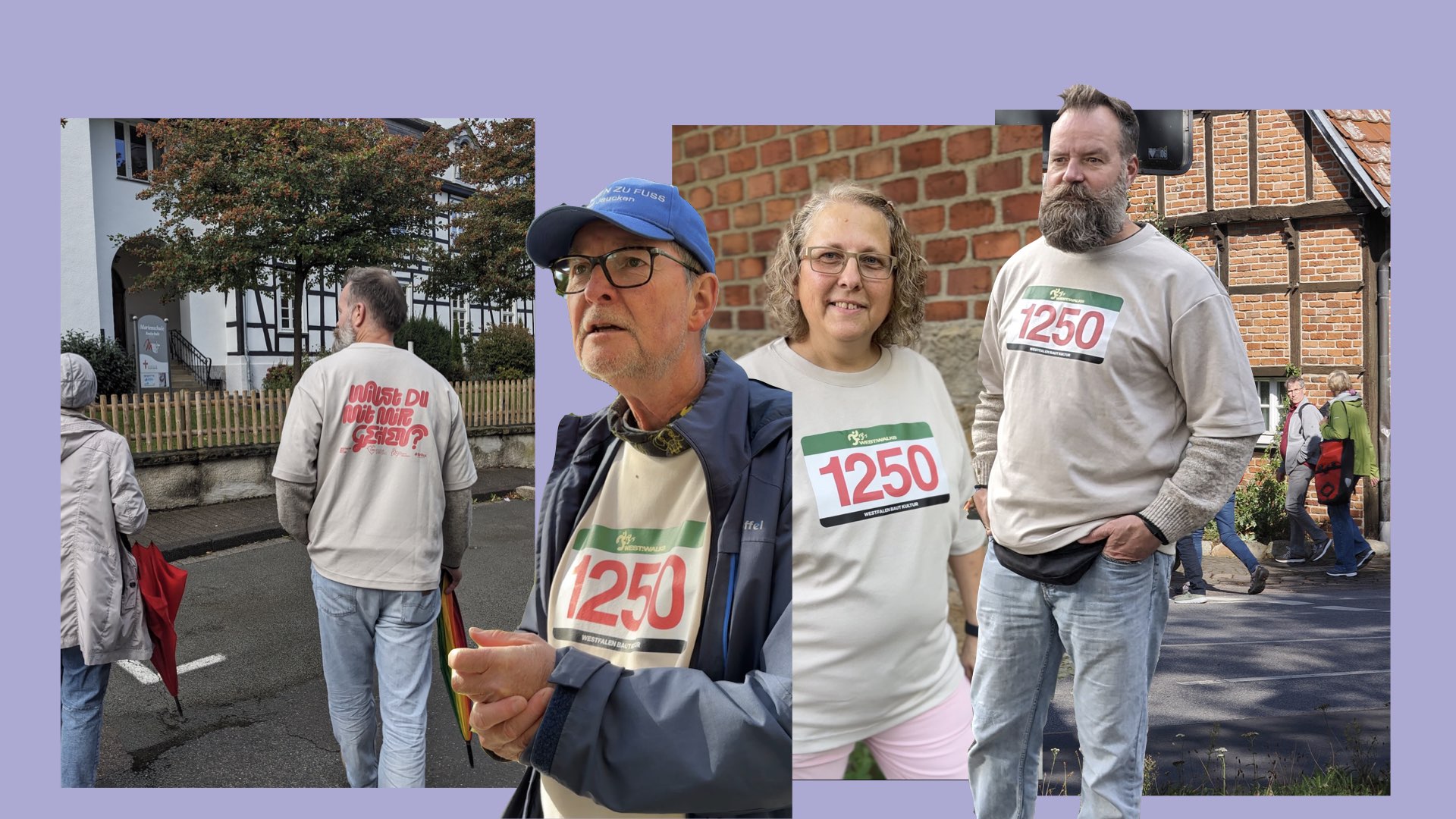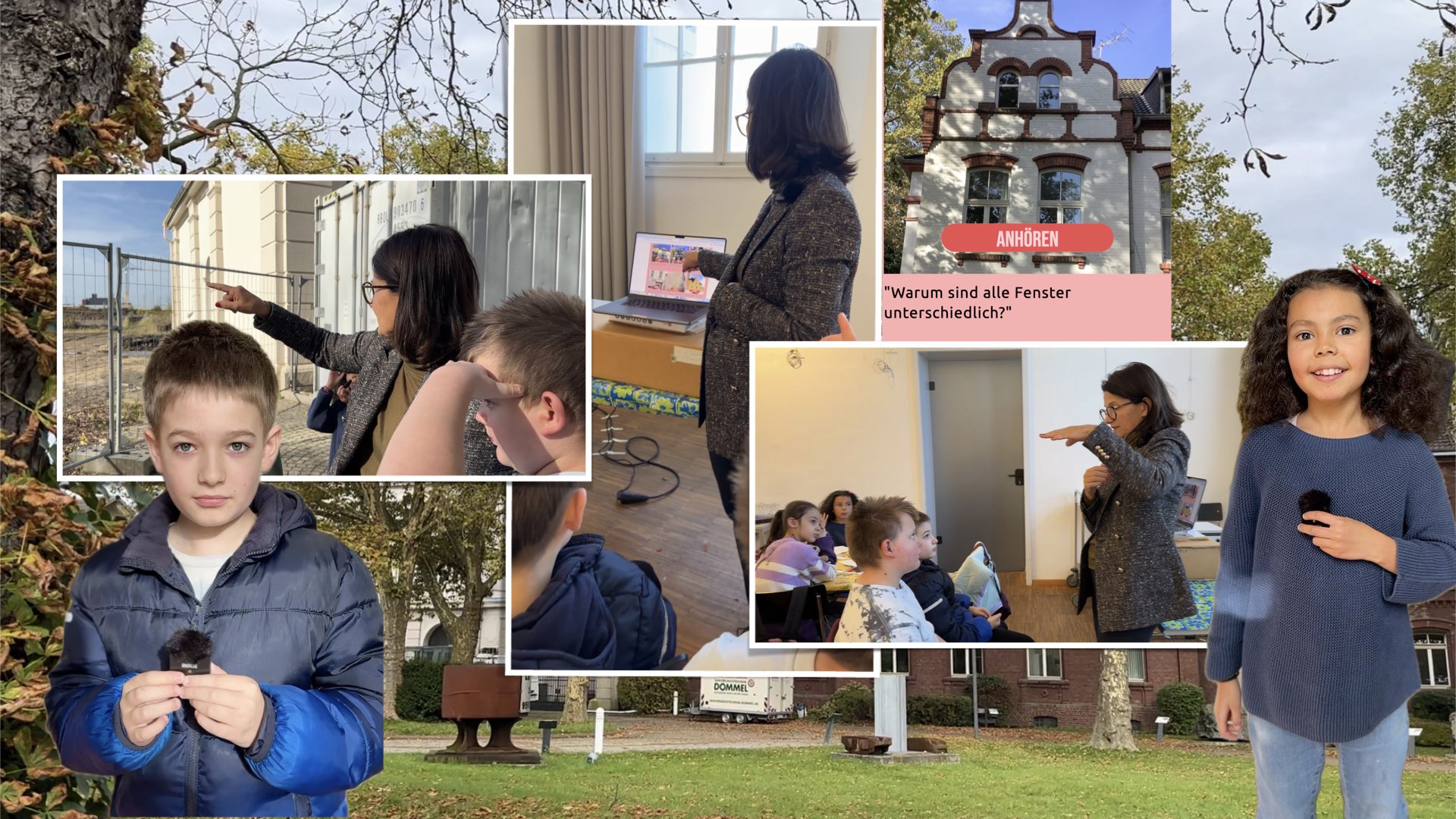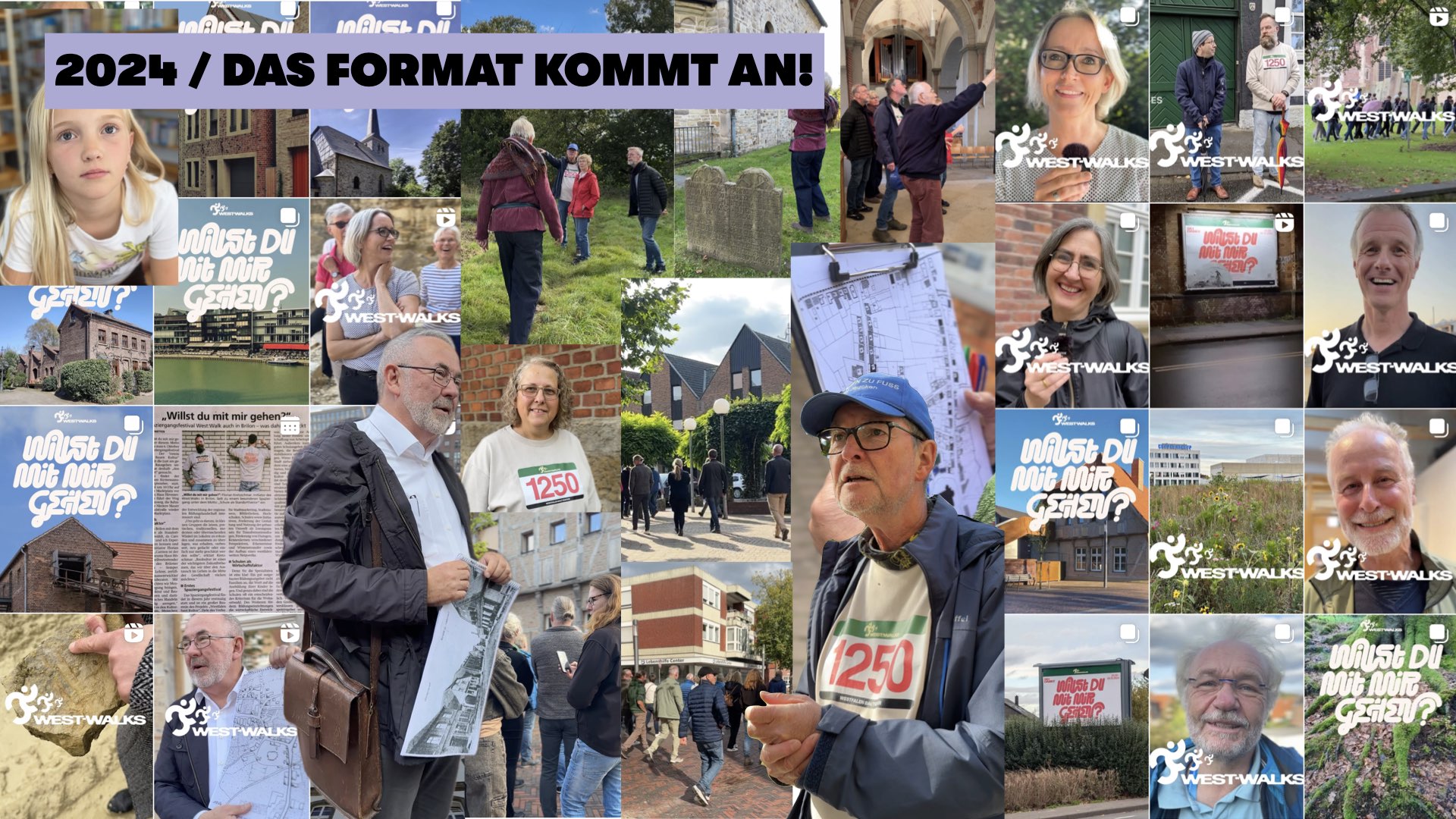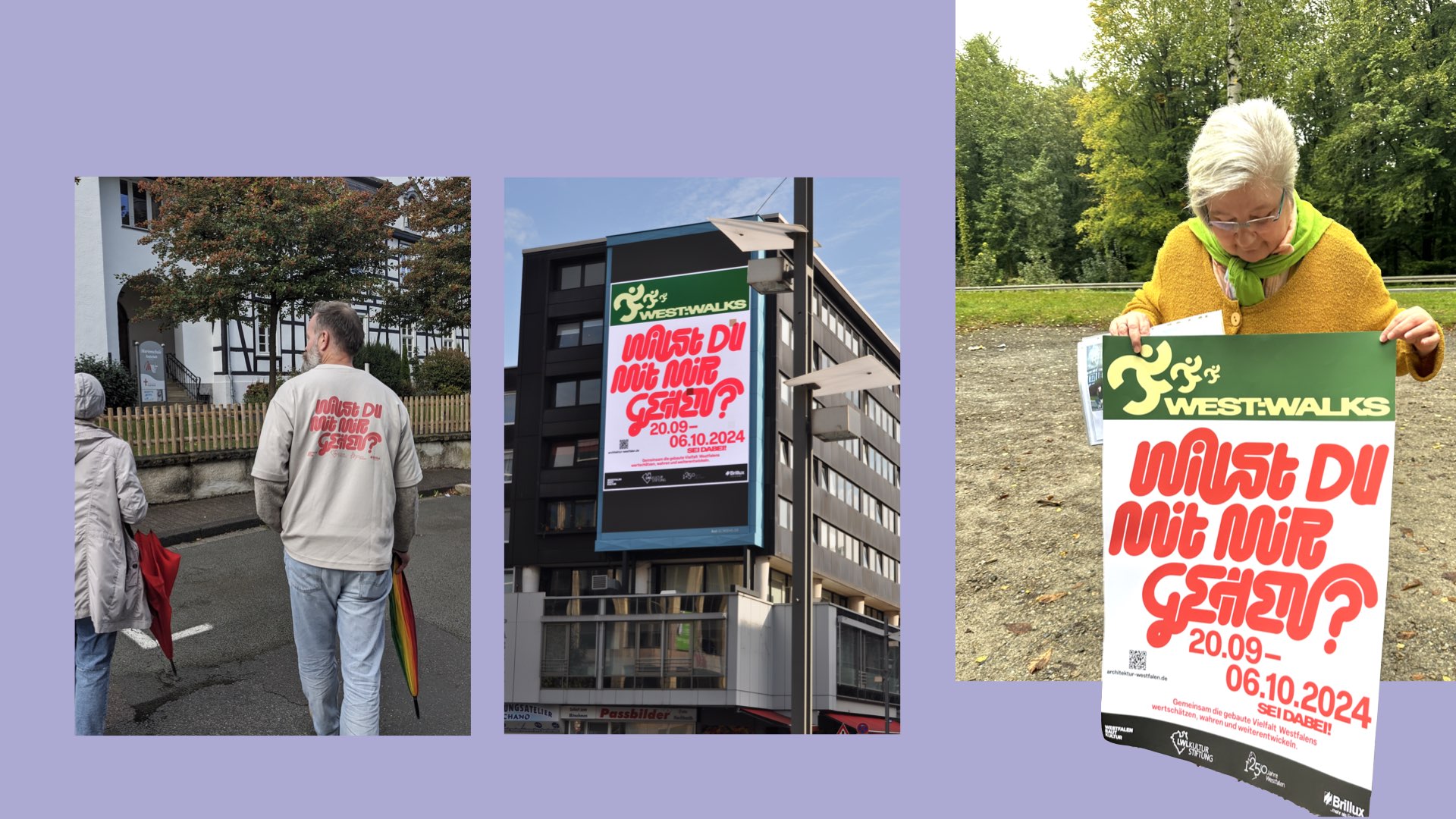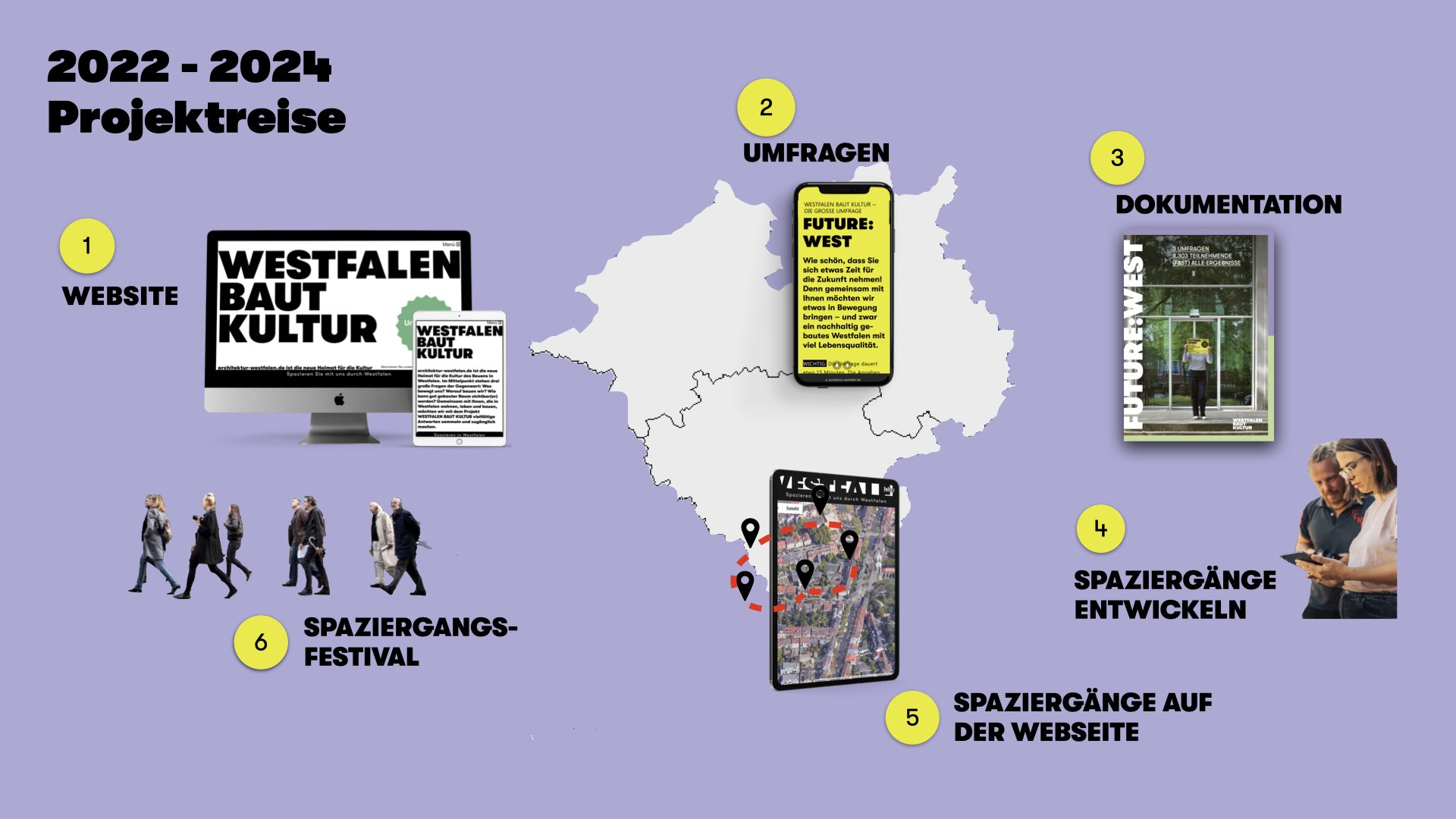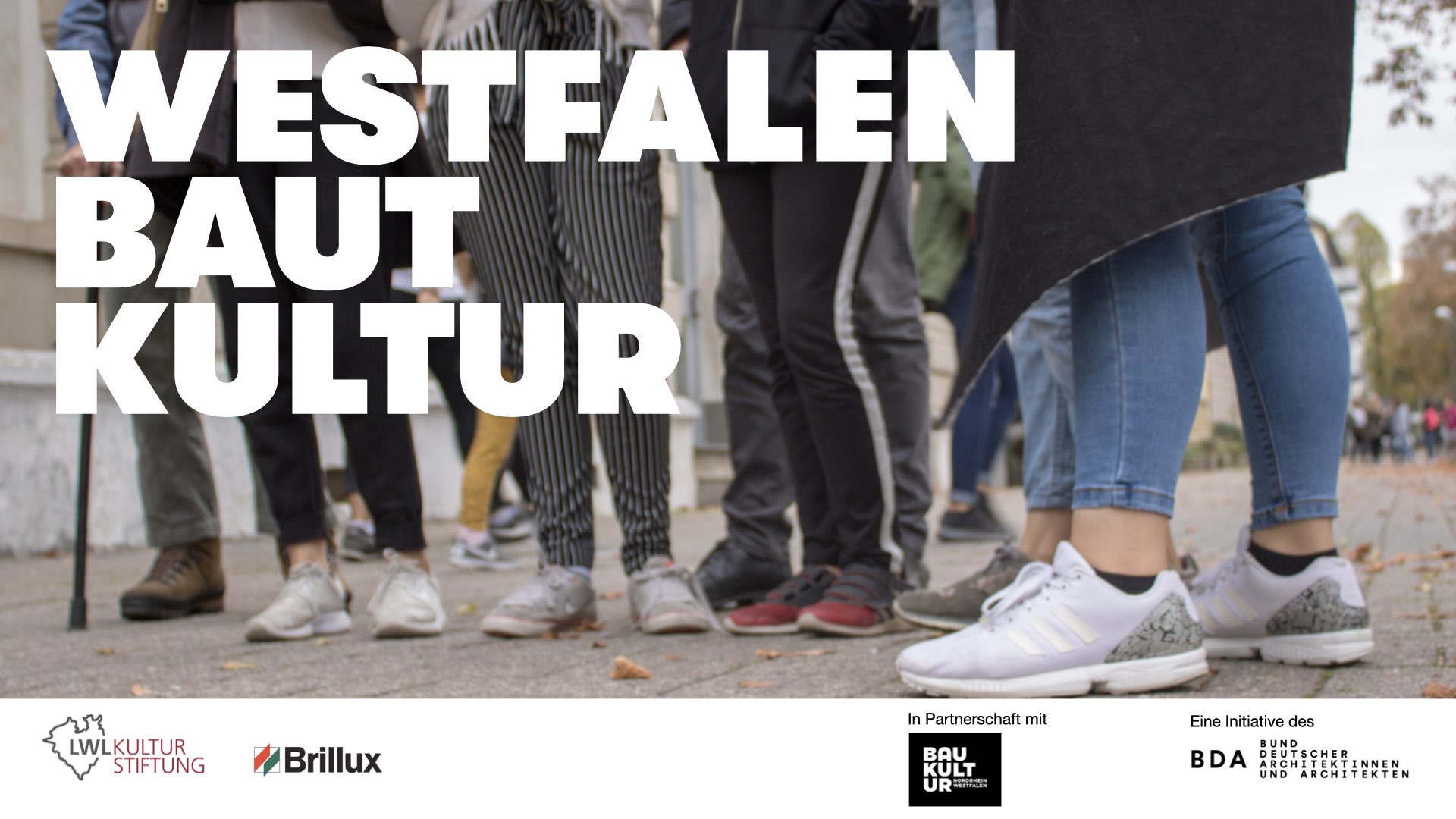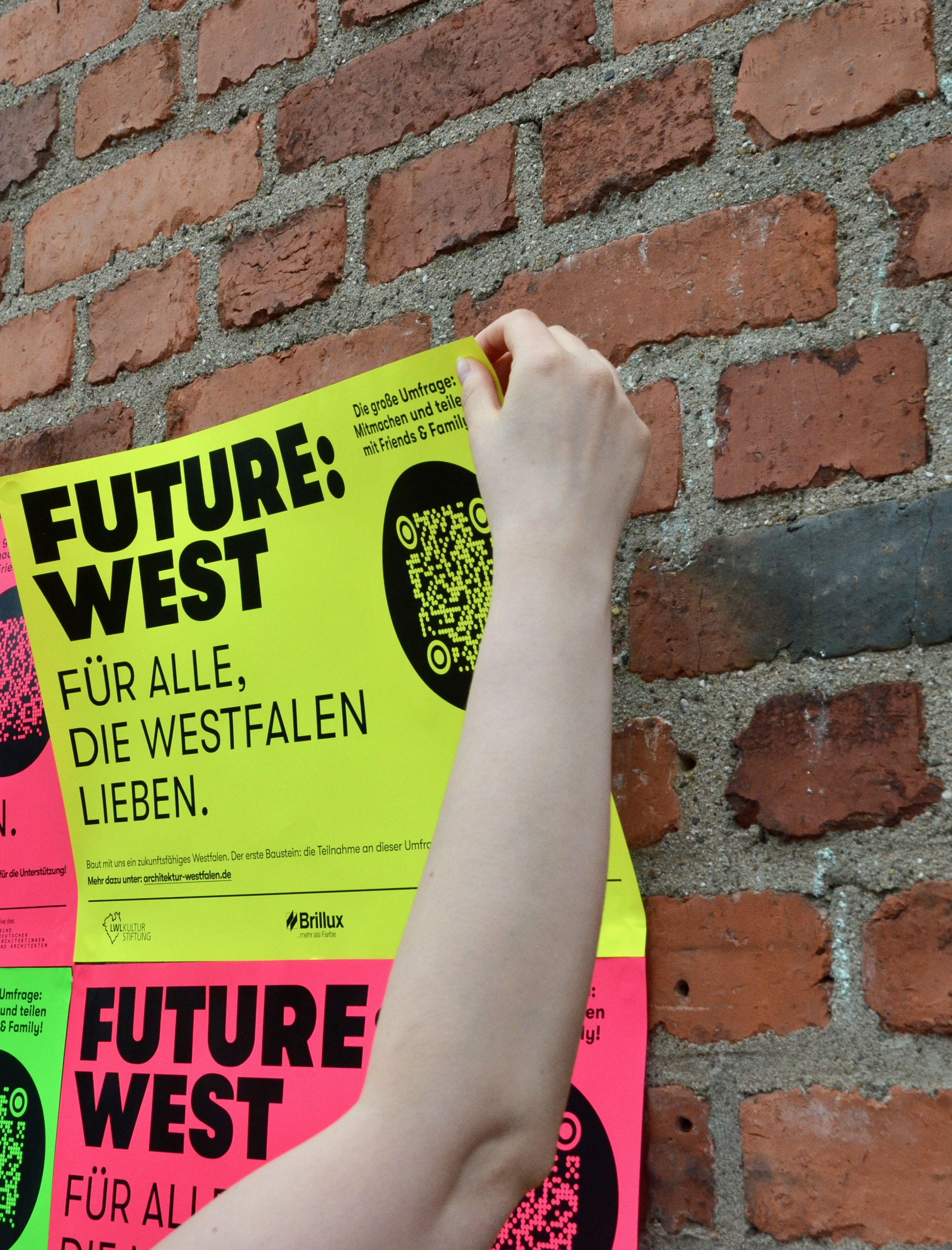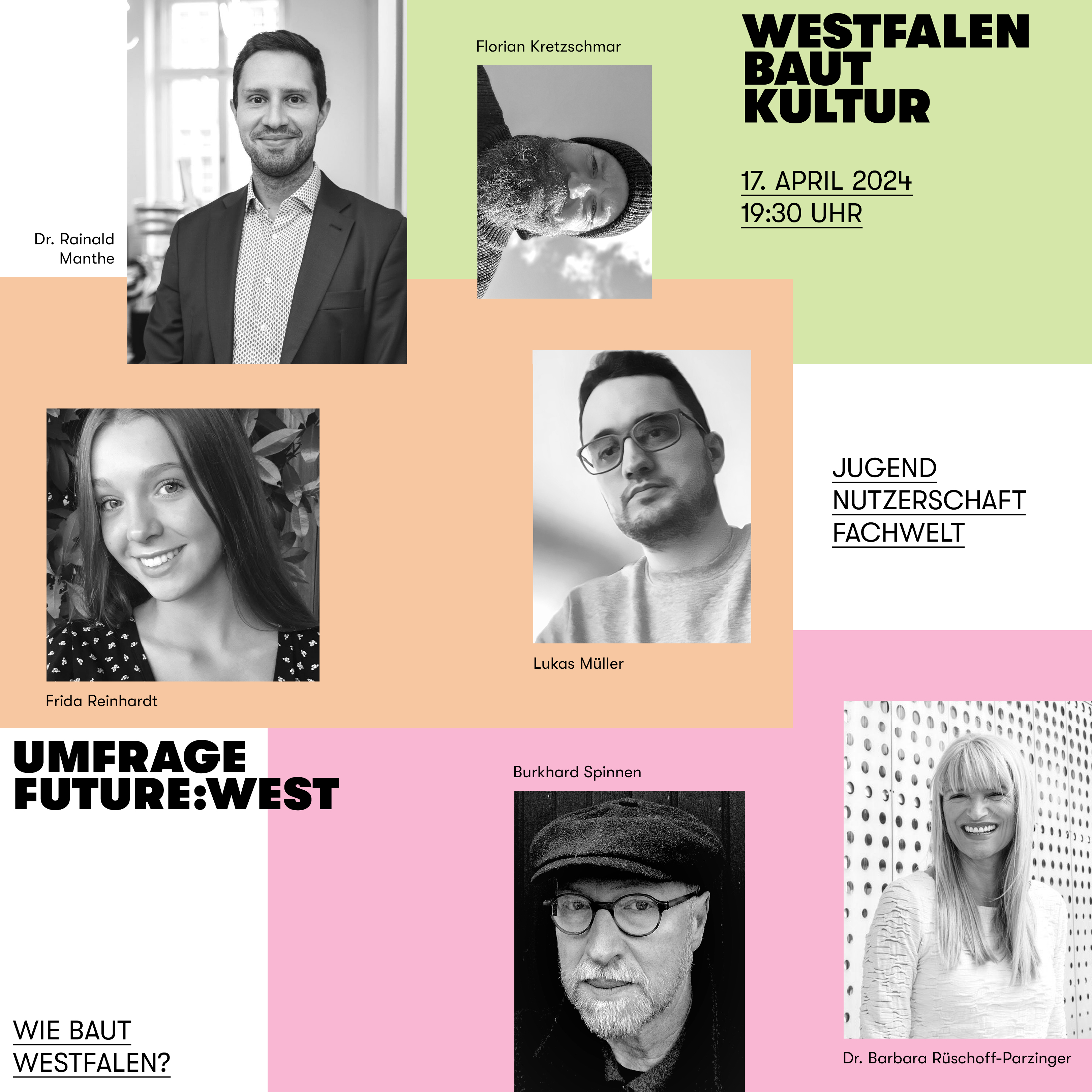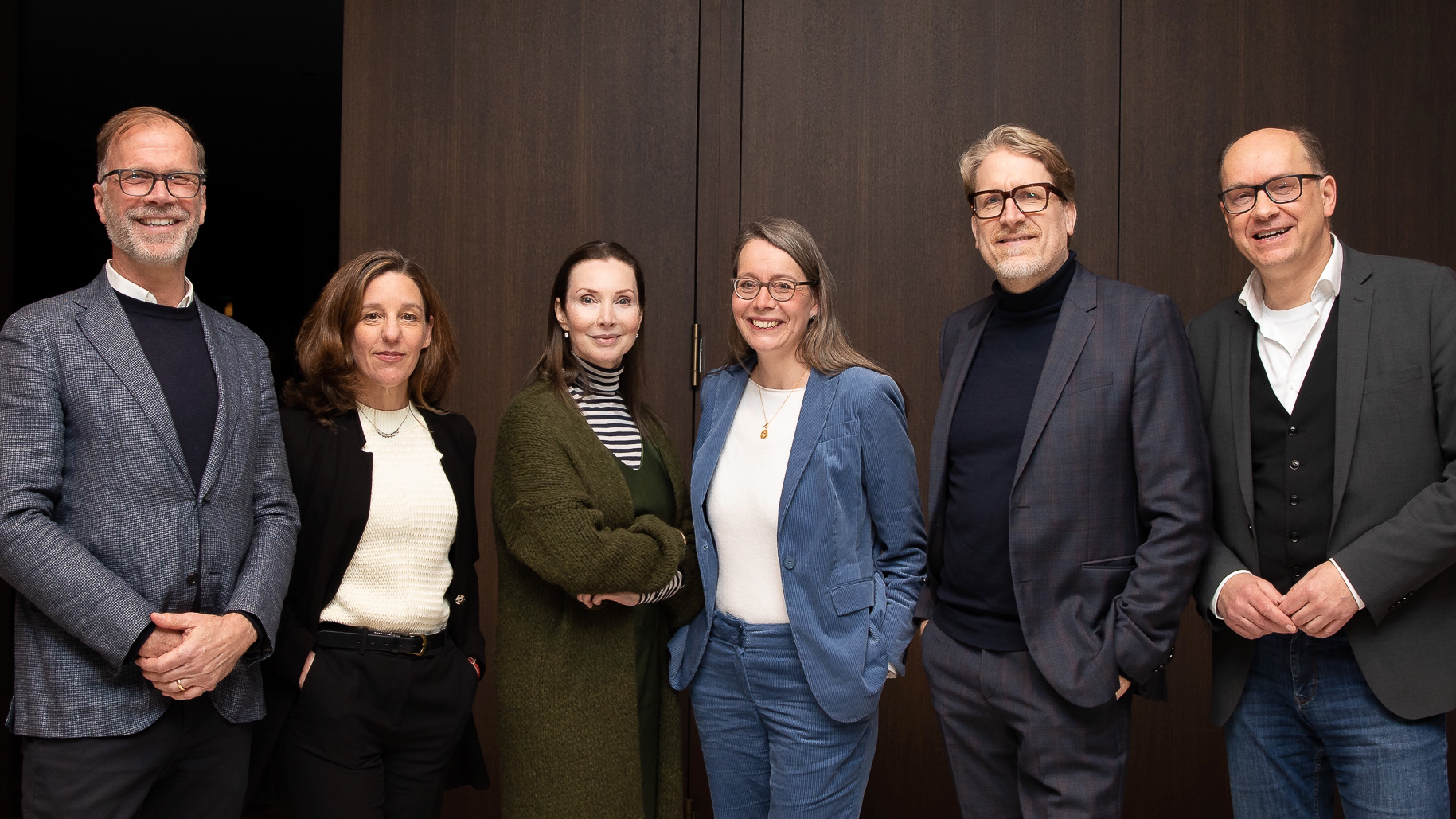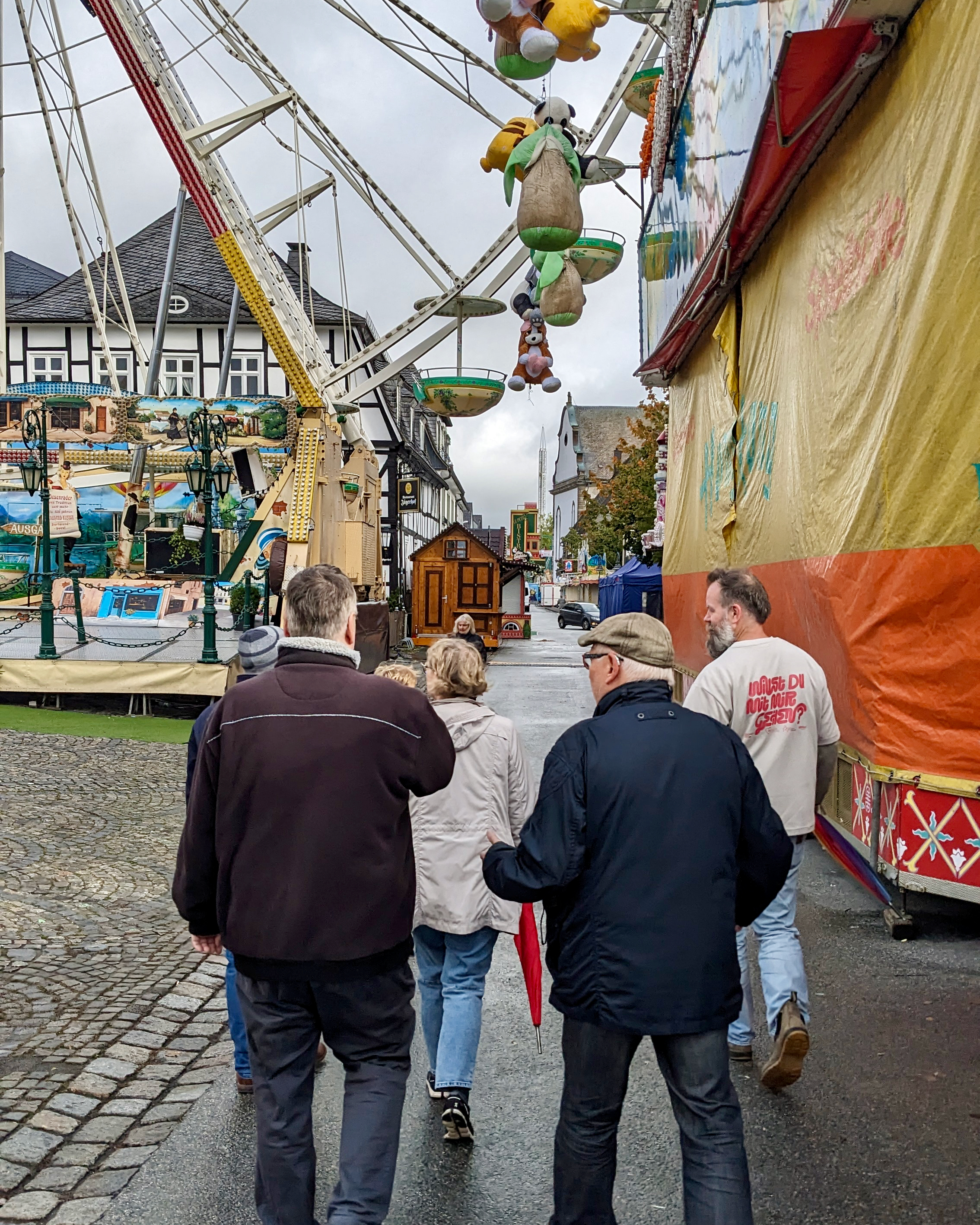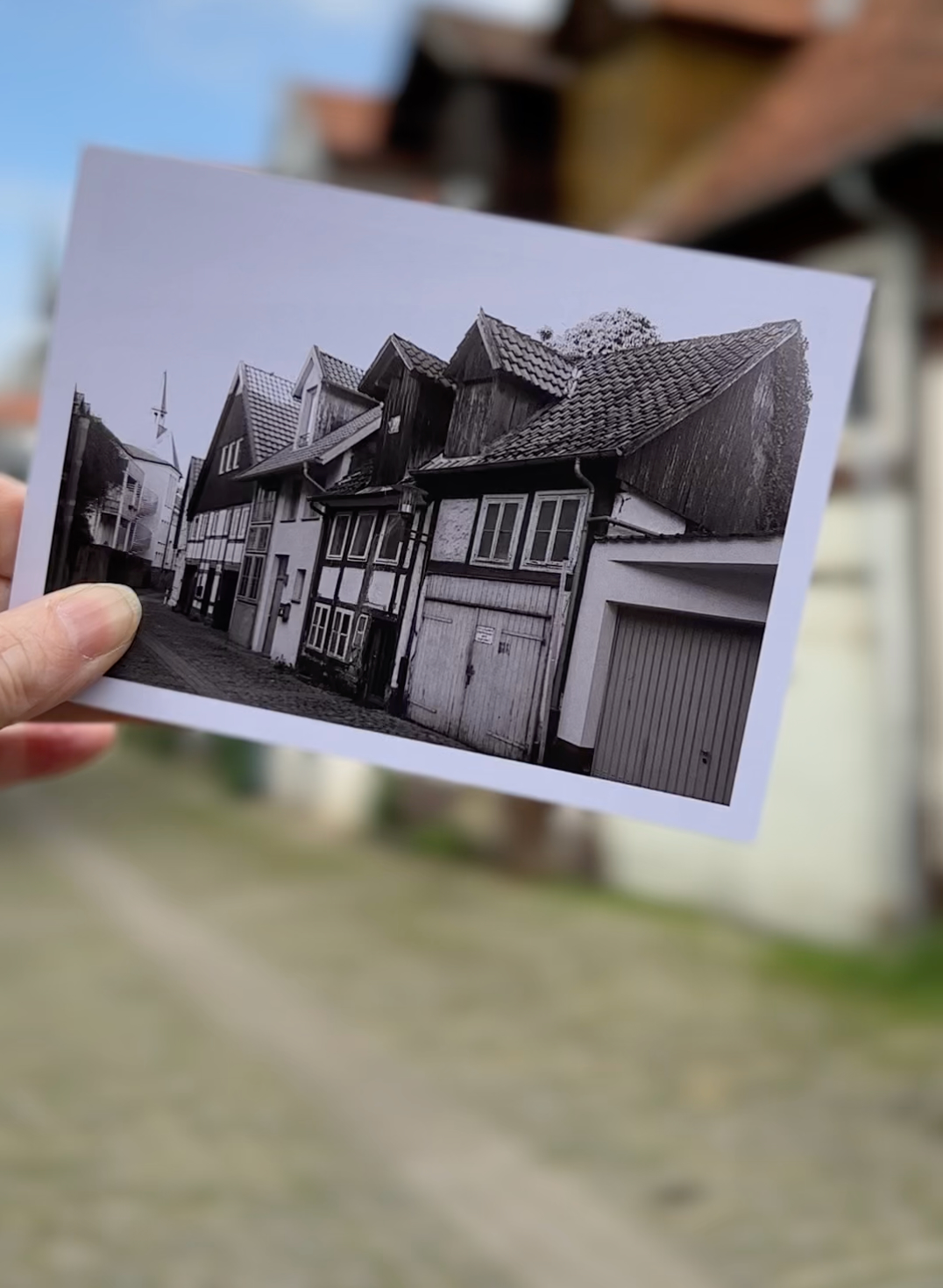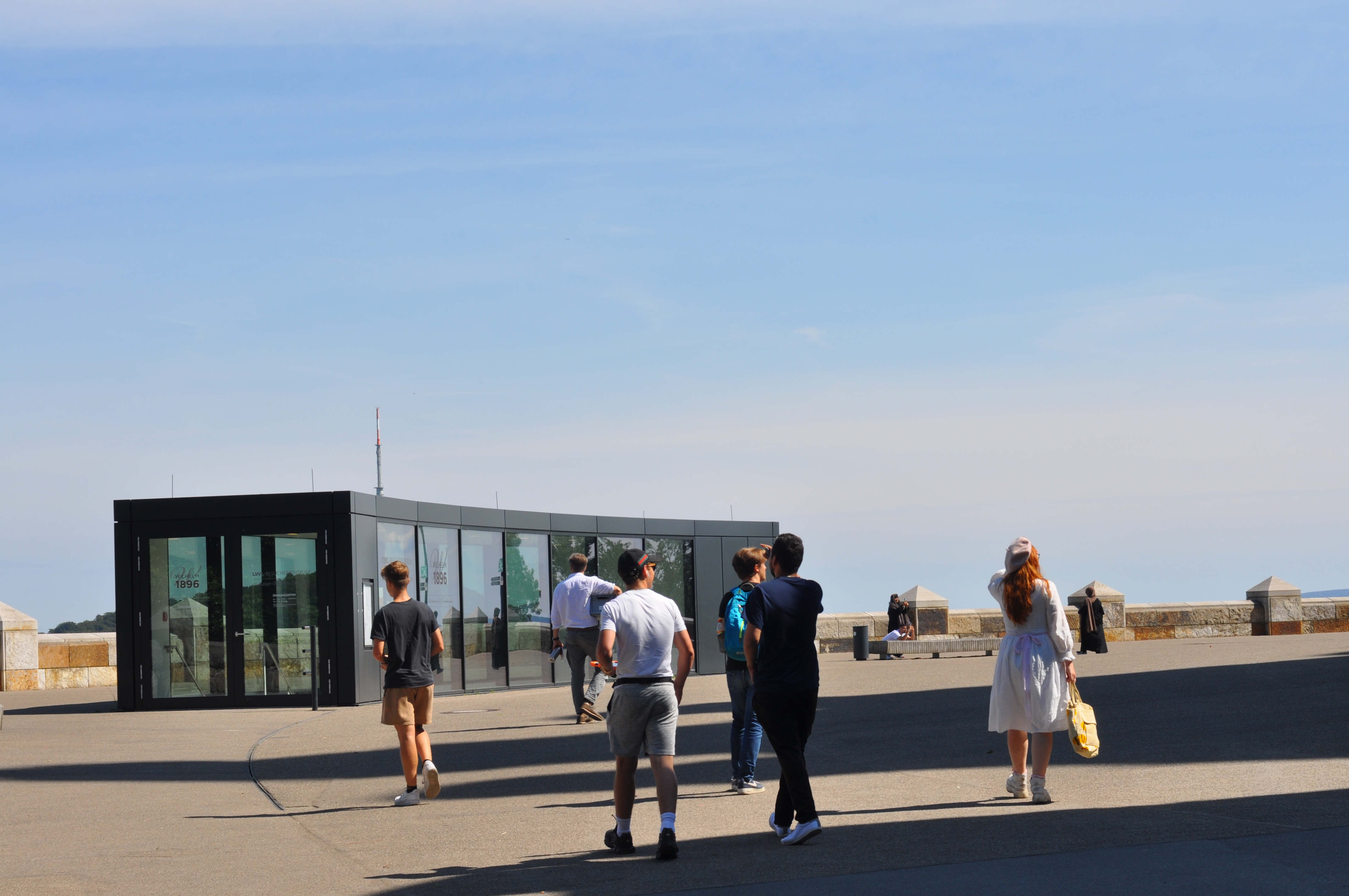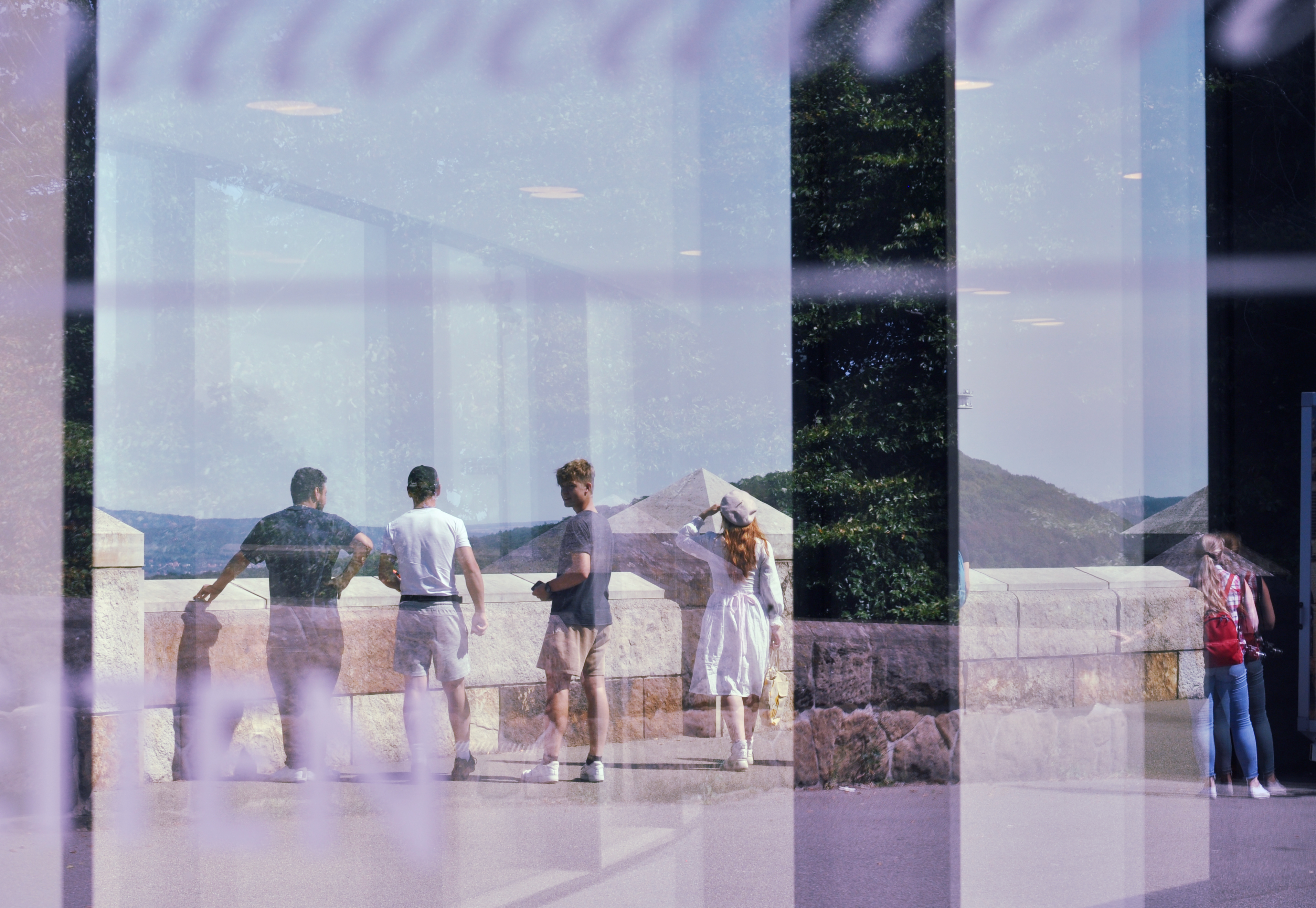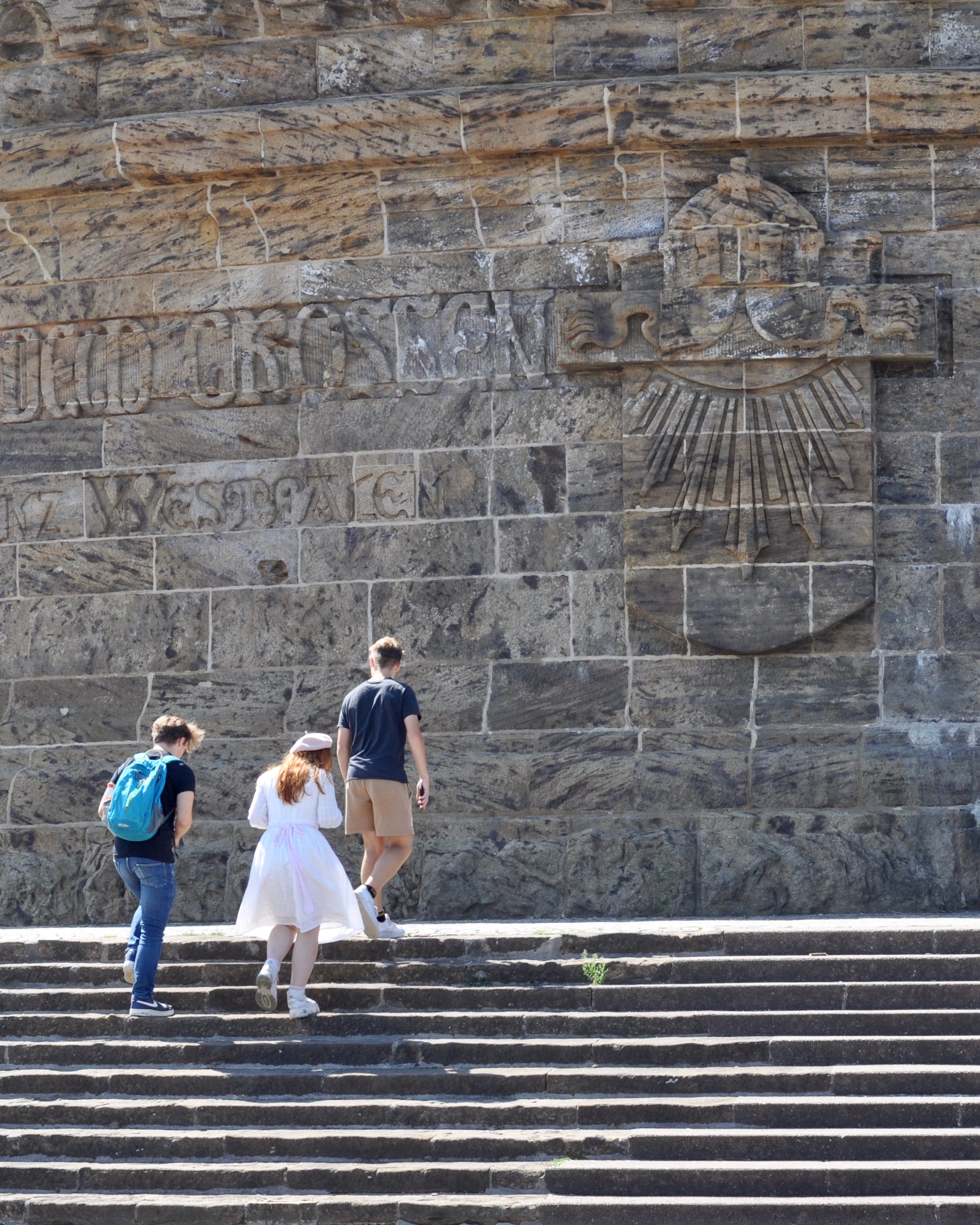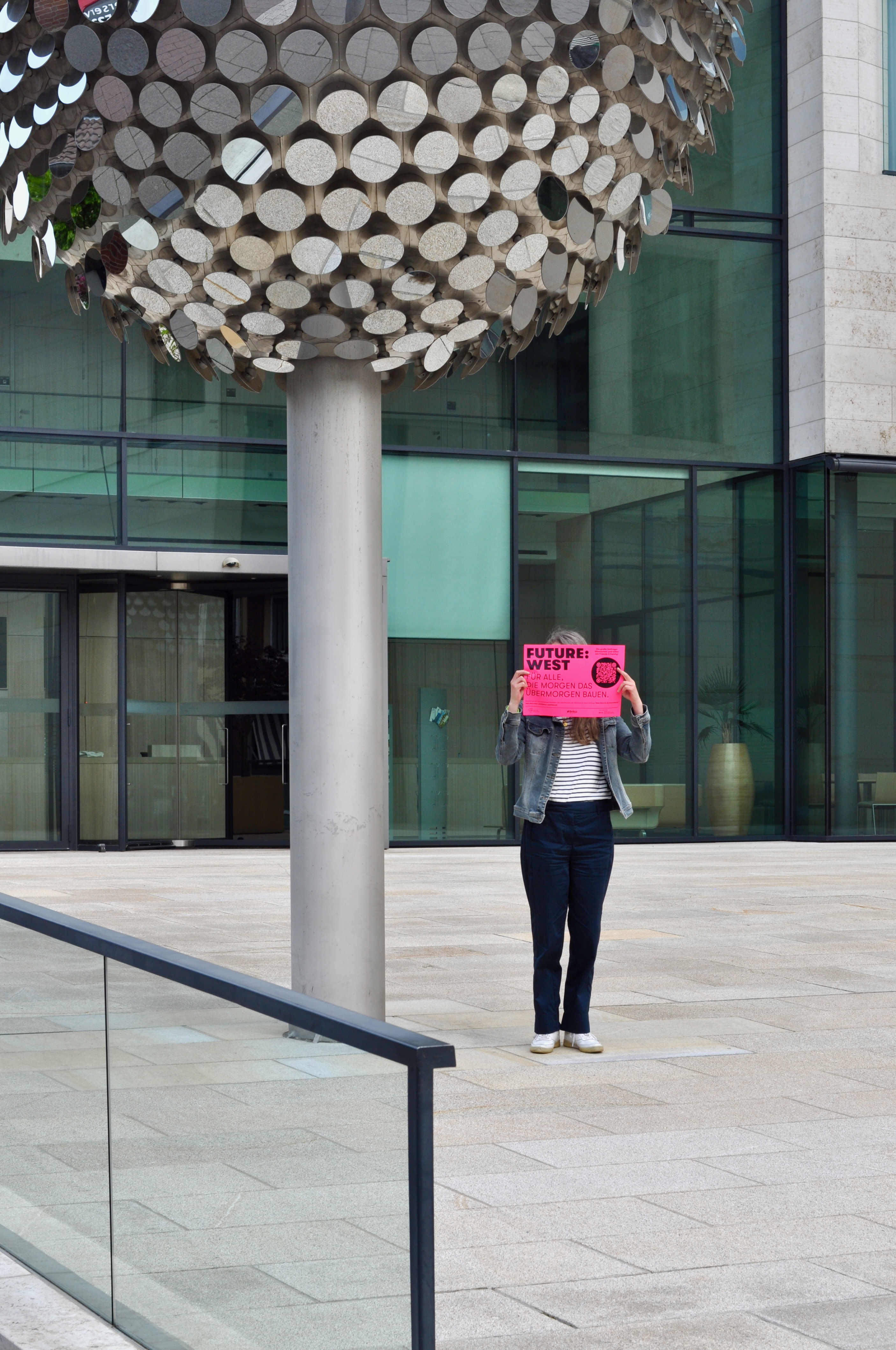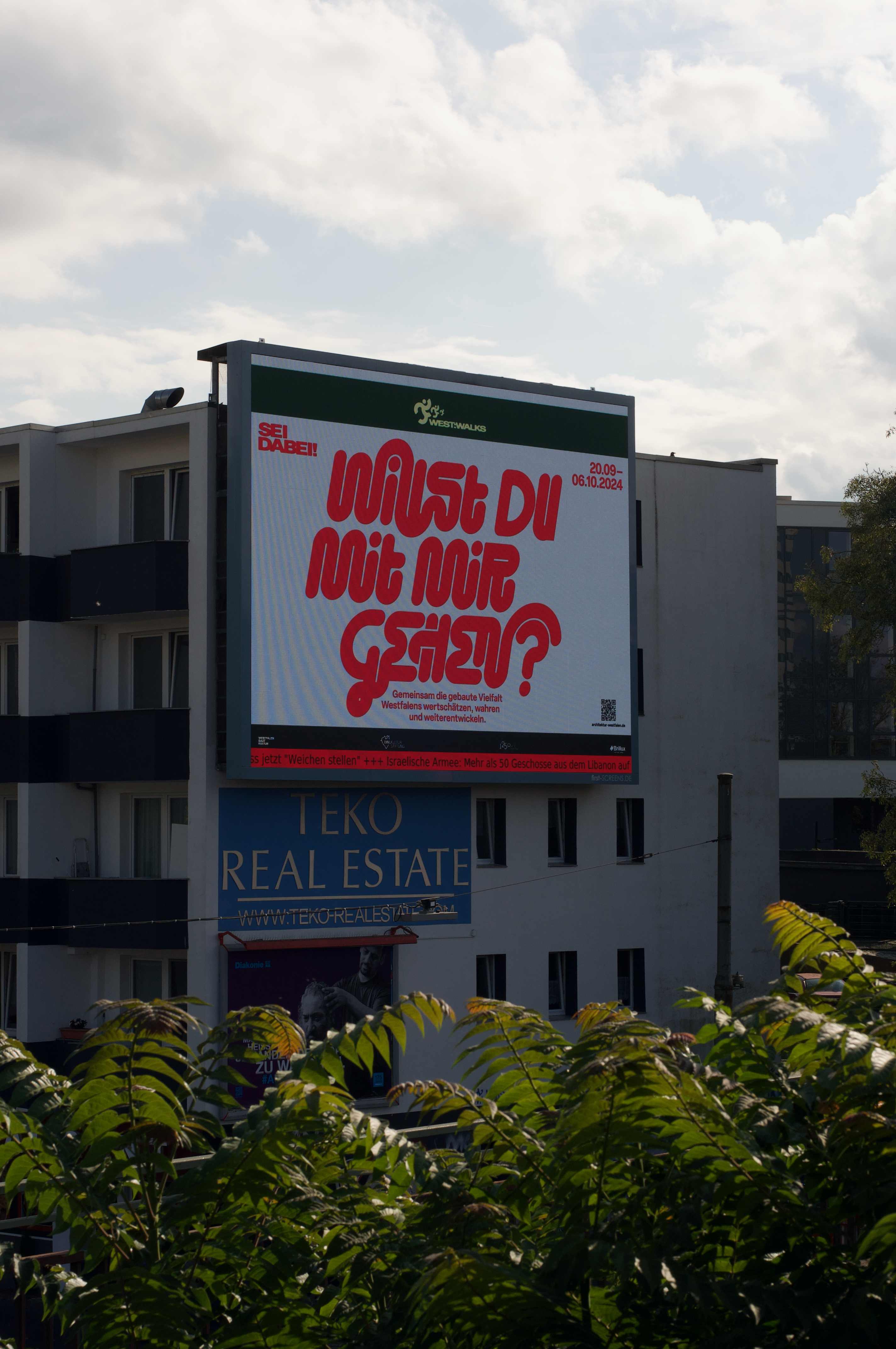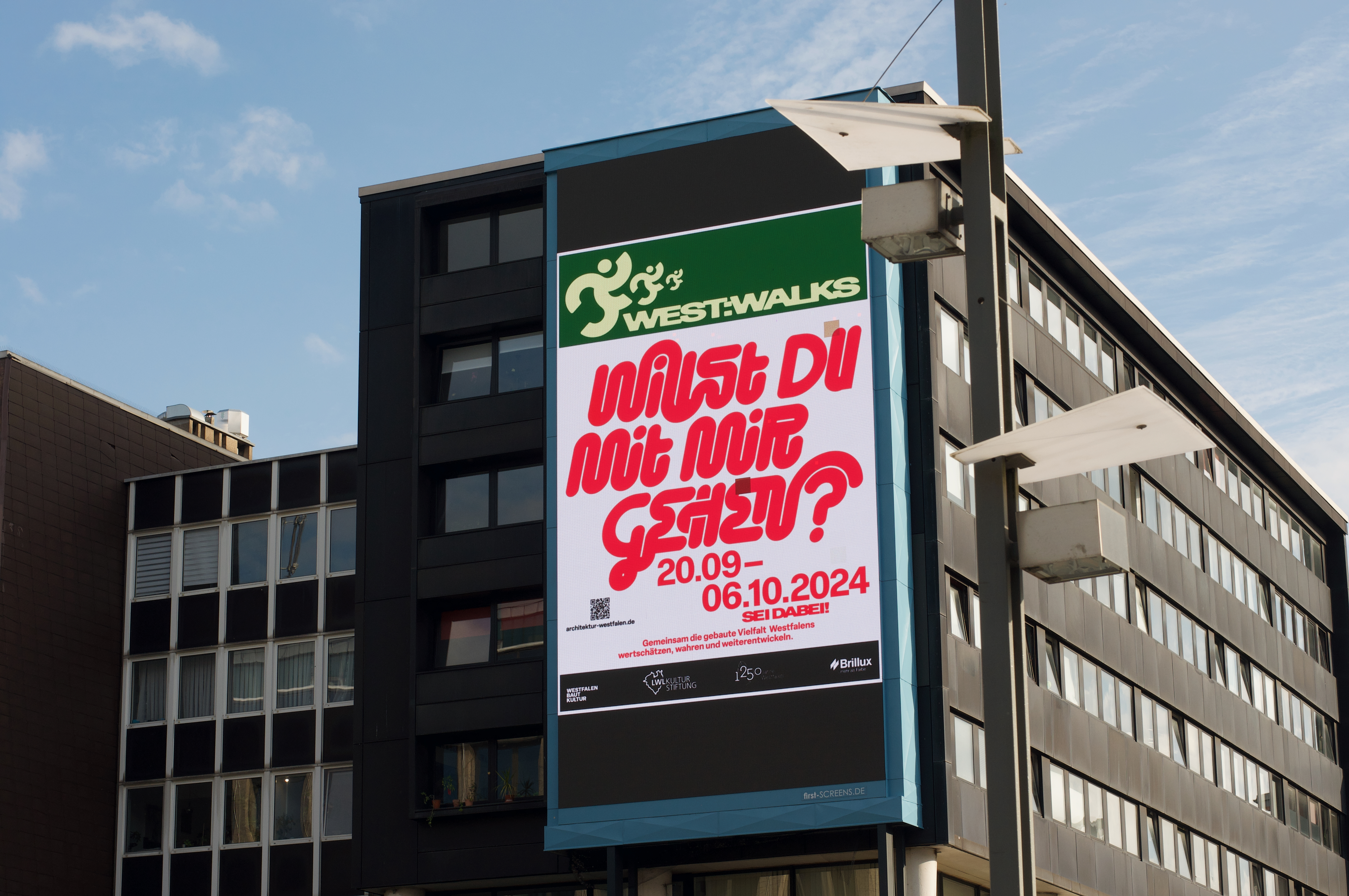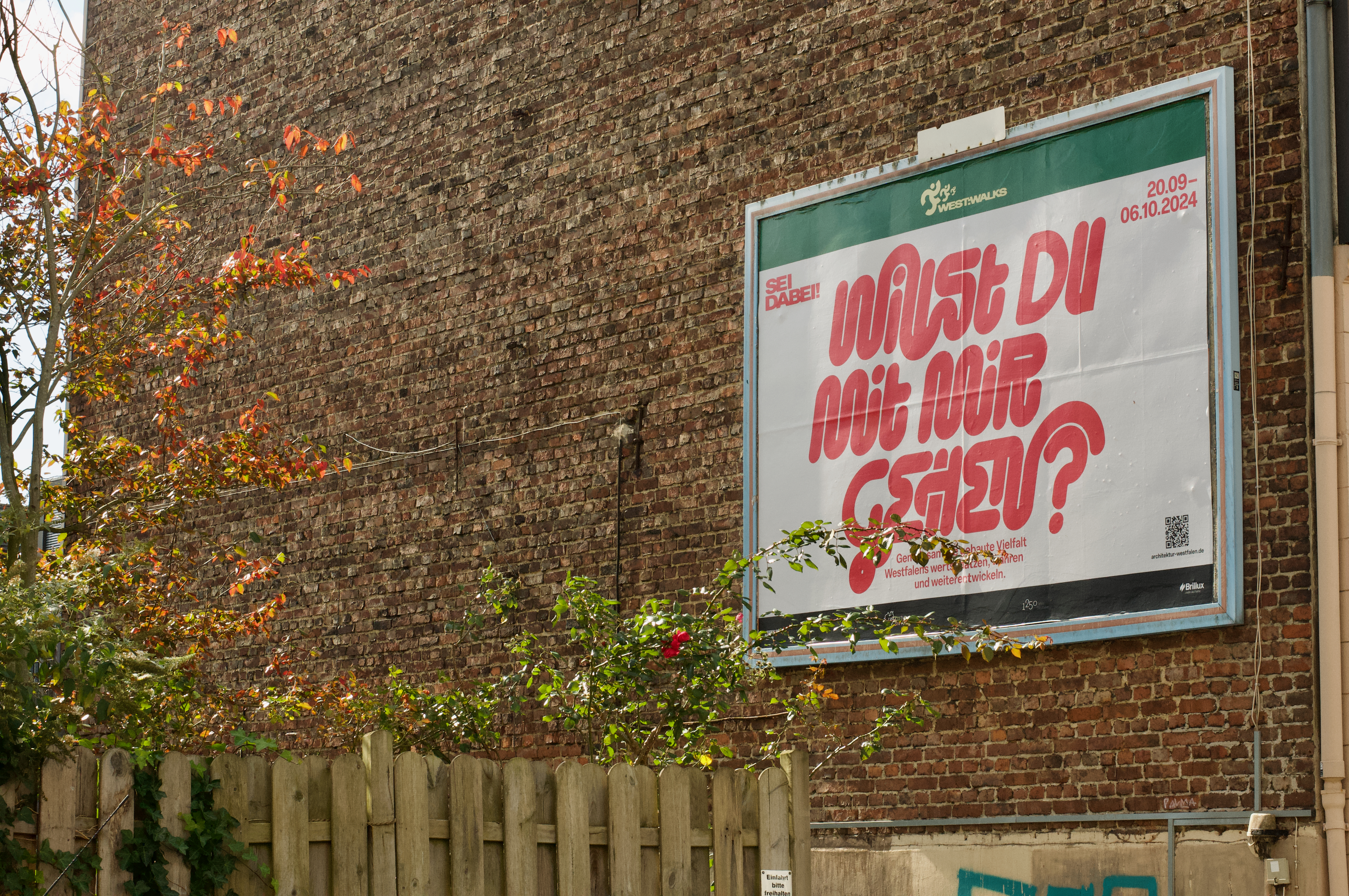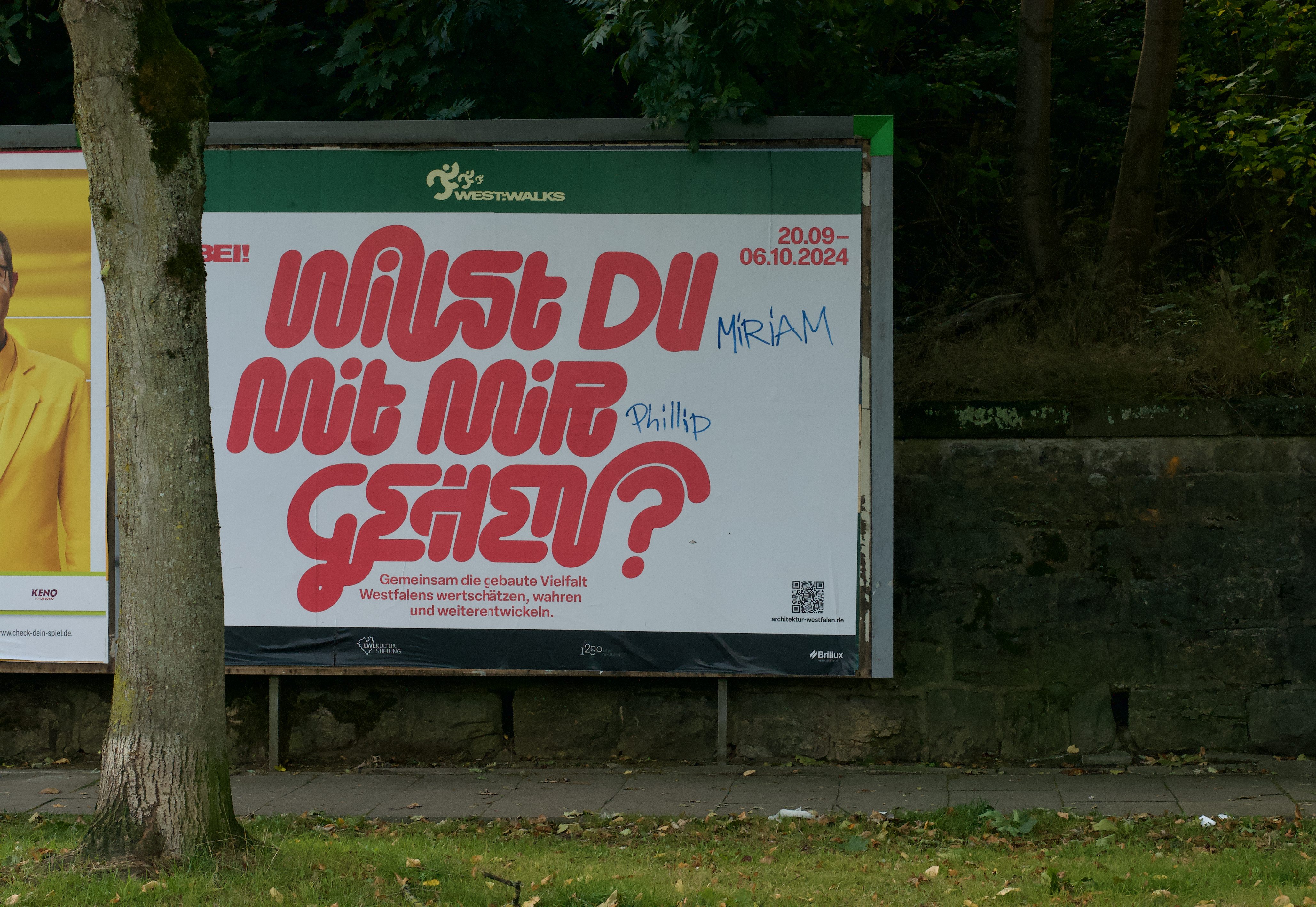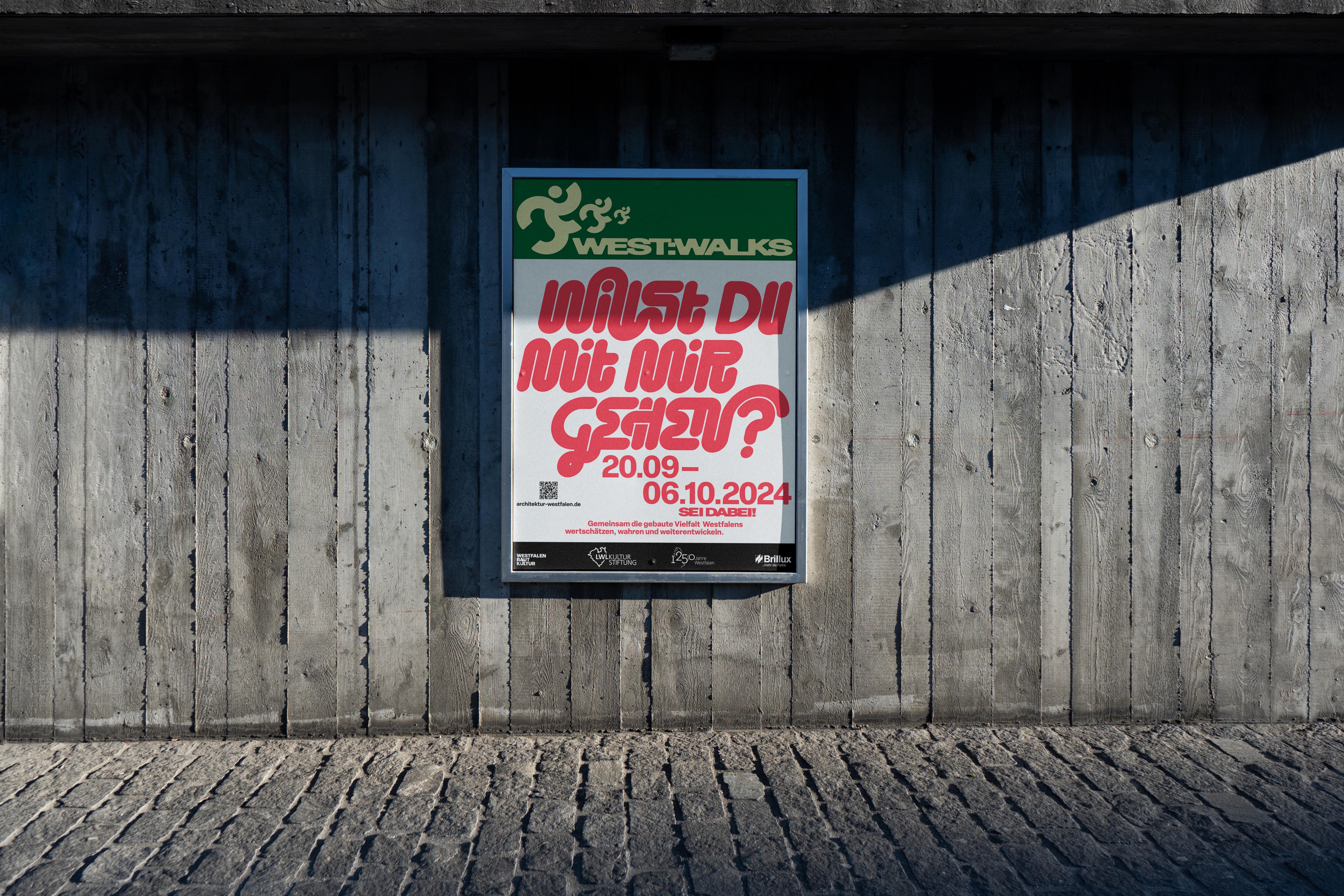Prioritising the places and people that need it the most
WEST:WALKS
WEST:WALKS – Making Built Culture Accessible to All
How can we shape our built environment together? WEST:WALKS were developed for the 34,000 square kilometer region of Westphalia, building on insights from FUTURE:WEST—the first Europe-wide survey on building culture. The initiative strengthens disadvantaged places and empowers marginalized groups, including children, migrants, and low-income communities, by enhancing language proficiency in building culture and raising awareness of ecological interconnections.
Germany
Regional
Westphalia, Northrhein-Westphalia, Germany
It addresses urban-rural linkages
It refers to other types of transformations (soft investment)
Yes
2025-01-21
No
No
No
As a representative of an organisation
WEST:WALKS – Making Built Culture Accessible to All
WEST:WALKS is a regional walking festival developed for Westphalia, based on FUTURE:WEST—the first Europe-wide survey on building culture. This dual approach first identifies the needs of professionals, users, and young people and then translates findings into public engagement activities, making it adaptable across Europe.
WEST:WALKS strengthens disadvantaged places and empowers marginalized groups such as children, migrants, and low-income communities by fostering dialogue about the built environment. In areas like Dortmund Nordstadt, where nearly every second child faces poverty, the project creates spaces for exchange, offering new perspectives and social empowerment.
A core element is the development of language skills related to building culture. One-time participation is not enough—regular discussions build confidence and vocabulary, enabling active contributions to urban development. Additionally, WEST:WALKS highlights long-term ecological challenges. A geologist from the University of Münster warned that relocating cooling systems to basements increases groundwater temperatures, demonstrating the interconnectedness of architecture and the environment.
The festival promotes sustainability, inclusion, and aesthetics by connecting professionals and communities. Walks such as the “Sandstone Walk” explore regional building materials, while events in Dortmund Nordstadt empower young people to guide professionals through their neighborhoods, fostering agency and awareness.
The project’s methodology is scalable and transferable across Europe, enabling regions to assess local needs and foster meaningful dialogue. WEST:WALKS embodies the values of the New European Bauhaus by integrating sustainability, social inclusion, and cultural heritage—showing that everyone can shape their built environment.
WEST:WALKS is a regional walking festival developed for Westphalia, based on FUTURE:WEST—the first Europe-wide survey on building culture. This dual approach first identifies the needs of professionals, users, and young people and then translates findings into public engagement activities, making it adaptable across Europe.
WEST:WALKS strengthens disadvantaged places and empowers marginalized groups such as children, migrants, and low-income communities by fostering dialogue about the built environment. In areas like Dortmund Nordstadt, where nearly every second child faces poverty, the project creates spaces for exchange, offering new perspectives and social empowerment.
A core element is the development of language skills related to building culture. One-time participation is not enough—regular discussions build confidence and vocabulary, enabling active contributions to urban development. Additionally, WEST:WALKS highlights long-term ecological challenges. A geologist from the University of Münster warned that relocating cooling systems to basements increases groundwater temperatures, demonstrating the interconnectedness of architecture and the environment.
The festival promotes sustainability, inclusion, and aesthetics by connecting professionals and communities. Walks such as the “Sandstone Walk” explore regional building materials, while events in Dortmund Nordstadt empower young people to guide professionals through their neighborhoods, fostering agency and awareness.
The project’s methodology is scalable and transferable across Europe, enabling regions to assess local needs and foster meaningful dialogue. WEST:WALKS embodies the values of the New European Bauhaus by integrating sustainability, social inclusion, and cultural heritage—showing that everyone can shape their built environment.
Inclusion
Sustainability
Expert-User Dialogue
Community Engagement
Heritage & Built Culture
Sustainability Objectives and Achievements of WEST:WALKS
By embedding sustainability into everyday conversations and experiences, WEST:WALKS transforms public awareness into lasting, community-driven action.
1. Raising Awareness for Sustainable Building Practices
WEST:WALKS fosters public understanding of sustainable construction through walks highlighting local materials, climate-conscious architecture, and resource-efficient renovation. Walks like the “Sandstone Walk” in the Baumberge region show how regional materials have been used for centuries, inspiring more sustainable choices today.
2. Promoting Adaptive Reuse and Resource Efficiency
The project emphasizes reusing existing structures rather than demolishing them. By showcasing repurposed buildings, WEST:WALKS helps communities recognize the value of existing architecture. The FUTURE:WEST survey revealed many residents were unaware of sustainable alternatives—WEST:WALKS turns these insights into practical learning experiences.
3. Encouraging Climate-Conscious Urban Development
Through expert-citizen dialogue, WEST:WALKS educates participants on urban planning’s environmental impact. For example, discussions during walks addressed the rise in groundwater temperatures due to cooling systems in basements. This knowledge empowers communities to make informed, sustainable choices.
Why WEST:WALKS is an Exemplary Sustainability Project
Scalable and Transferable: The model can be replicated across Europe, helping regions assess local challenges and engage communities in shaping sustainable environments.
Bridging Knowledge Gaps: WEST:WALKS translates expert knowledge into daily discussions, fostering long-term engagement beyond one-time interventions.
Tangible Impact: The project shifts mindsets toward sustainable building, renovation, and material use, ensuring real-world applications of climate-friendly construction principles.
By embedding sustainability into everyday conversations and experiences, WEST:WALKS transforms public awareness into lasting, community-driven action.
1. Raising Awareness for Sustainable Building Practices
WEST:WALKS fosters public understanding of sustainable construction through walks highlighting local materials, climate-conscious architecture, and resource-efficient renovation. Walks like the “Sandstone Walk” in the Baumberge region show how regional materials have been used for centuries, inspiring more sustainable choices today.
2. Promoting Adaptive Reuse and Resource Efficiency
The project emphasizes reusing existing structures rather than demolishing them. By showcasing repurposed buildings, WEST:WALKS helps communities recognize the value of existing architecture. The FUTURE:WEST survey revealed many residents were unaware of sustainable alternatives—WEST:WALKS turns these insights into practical learning experiences.
3. Encouraging Climate-Conscious Urban Development
Through expert-citizen dialogue, WEST:WALKS educates participants on urban planning’s environmental impact. For example, discussions during walks addressed the rise in groundwater temperatures due to cooling systems in basements. This knowledge empowers communities to make informed, sustainable choices.
Why WEST:WALKS is an Exemplary Sustainability Project
Scalable and Transferable: The model can be replicated across Europe, helping regions assess local challenges and engage communities in shaping sustainable environments.
Bridging Knowledge Gaps: WEST:WALKS translates expert knowledge into daily discussions, fostering long-term engagement beyond one-time interventions.
Tangible Impact: The project shifts mindsets toward sustainable building, renovation, and material use, ensuring real-world applications of climate-friendly construction principles.
By shifting learning from formal settings to real-world interactions, WEST:WALKS fosters an inclusive and dynamic approach to experiencing and shaping the built environment. It enhances the appreciation of the built environment by creating open, dynamic spaces for dialogue by bringing people into motion and fostering real conversations through direct experiences with architecture and urban spaces. The essence of WEST:WALKS lies in the exchange – users learn from experts, and experts learn from users, creating a reciprocal learning process that strengthens community knowledge.
1. Fostering Open Discussion and Exchange: WEST:WALKS thrives on spontaneous, location-based conversations. Architects, urban planners, and residents engage in direct discussions about aesthetics, sustainability, and functionality.
2. Bridging Everyday Decisions and Architectural Knowledge: The initiative was driven by architects in the region who recognized the need to make their knowledge of sustainable and aesthetically valuable construction accessible beyond specific building commissions. WEST:WALKS helps people understand the principles of good design so they can make better decisions – not only when planning a home but even when choosing materials at a local hardware store.
3. Strengthening Sensory and Spatial Awareness: Through hands-on exploration, participants experience architecture with all their senses. They engage with different materials, listen to how spaces shape sound, and reflect on how built environments influence daily life.
Why WEST:WALKS is Exemplary in This Context
Breaking Down Knowledge Barriers: It removes architecture from exclusive expert circles and brings it into everyday life.
Empowering Communities: People develop confidence in evaluating and discussing aesthetics, making informed choices
Strengthening Cultural Awareness: By connecting professional insights with local narratives, WEST:WALKS makes architectural heritage tangible and relevant.
1. Fostering Open Discussion and Exchange: WEST:WALKS thrives on spontaneous, location-based conversations. Architects, urban planners, and residents engage in direct discussions about aesthetics, sustainability, and functionality.
2. Bridging Everyday Decisions and Architectural Knowledge: The initiative was driven by architects in the region who recognized the need to make their knowledge of sustainable and aesthetically valuable construction accessible beyond specific building commissions. WEST:WALKS helps people understand the principles of good design so they can make better decisions – not only when planning a home but even when choosing materials at a local hardware store.
3. Strengthening Sensory and Spatial Awareness: Through hands-on exploration, participants experience architecture with all their senses. They engage with different materials, listen to how spaces shape sound, and reflect on how built environments influence daily life.
Why WEST:WALKS is Exemplary in This Context
Breaking Down Knowledge Barriers: It removes architecture from exclusive expert circles and brings it into everyday life.
Empowering Communities: People develop confidence in evaluating and discussing aesthetics, making informed choices
Strengthening Cultural Awareness: By connecting professional insights with local narratives, WEST:WALKS makes architectural heritage tangible and relevant.
WEST:WALKS ensures everyone can access architectural knowledge and shape their built environment. It removes barriers by creating free, open, and participatory experiences, bringing together diverse groups and making building culture a shared, accessible resource.
1. Free and Barrier-Free Access WEST:WALKS are free of charge, ensuring affordability. They take place in public, accessible spaces with no registration required, making participation spontaneous. Walks accommodate people with disabilities, ensuring inclusive routes and discussions.
2. Inclusive Dialogue Between Experts and Citizens Unlike conventional formats, WEST:WALKS fosters mutual learning between professionals and residents. Experts share knowledge, while locals provide insights into real-life needs, ensuring practical and relevant discussions about urban spaces.
3. Reaching Marginalized Communities WEST:WALKS focuses on disadvantaged neighborhoods, where cultural and architectural discourse is often inaccessible. In Dortmund Nordstadt, where nearly every second child faces poverty, young participants gain a sense of agency over their surroundings.
Why WEST:WALKS is Exemplary in This Context
Removing Barriers – Free participation, open access, and inclusive routes ensure no one is excluded.
Democratizing Architectural Knowledge – The project enables co-creation instead of top-down planning.
Empowering Communities – By including marginalized voices, WEST:WALKS strengthens local engagement.
By turning the built environment into a shared topic of discussion and action, WEST:WALKS transforms passive residents into active city-makers.
1. Free and Barrier-Free Access WEST:WALKS are free of charge, ensuring affordability. They take place in public, accessible spaces with no registration required, making participation spontaneous. Walks accommodate people with disabilities, ensuring inclusive routes and discussions.
2. Inclusive Dialogue Between Experts and Citizens Unlike conventional formats, WEST:WALKS fosters mutual learning between professionals and residents. Experts share knowledge, while locals provide insights into real-life needs, ensuring practical and relevant discussions about urban spaces.
3. Reaching Marginalized Communities WEST:WALKS focuses on disadvantaged neighborhoods, where cultural and architectural discourse is often inaccessible. In Dortmund Nordstadt, where nearly every second child faces poverty, young participants gain a sense of agency over their surroundings.
Why WEST:WALKS is Exemplary in This Context
Removing Barriers – Free participation, open access, and inclusive routes ensure no one is excluded.
Democratizing Architectural Knowledge – The project enables co-creation instead of top-down planning.
Empowering Communities – By including marginalized voices, WEST:WALKS strengthens local engagement.
By turning the built environment into a shared topic of discussion and action, WEST:WALKS transforms passive residents into active city-makers.
WEST:WALKS is built on active citizen participation. Instead of experts leading discussions alone, the project creates a shared space where residents, professionals, and civil society engage in open dialogue about the built environment. By transforming people from passive observers into engaged city-makers, WEST:WALKS fosters a new culture of participation in shaping the built environment.
1. Citizens as Co-Creators: WEST:WALKS ensures that citizens shape the conversation. Residents are actively encouraged to initiate and lead walks in their own neighborhoods, sharing their lived experiences with architects and urban planners. This approach decentralizes expertise and fosters equal exchange between professionals and the public.
2. Involvement of Civil Society and Local Organizations: Civil society organizations, schools, and cultural institutions play a key role in connecting people to WEST:WALKS. In Dortmund Nordstadt, for example, schools engaged young people in walks where they explored their built surroundings and shared their perspectives on what makes a neighborhood livable. These collaborations help reach marginalized groups and ensure a broad, diverse representation in discussions.
3. Measurable Impact of Citizen Involvement: WEST:WALKS has not only shifted perceptions of architecture but also empowered residents to take ownership of their surroundings. Citizens who participated in walks reported an increased confidence in discussing urban issues, making informed housing decisions, and advocating for sustainable development in their communities.
Why WEST:WALKS is Exemplary in This Context
Beyond Consultation: Citizens actively shape the project by leading walks and setting discussion themes.
Inclusive Engagement: Civil society organizations ensure participation from marginalized communities.
Lasting Impact: The project increases public awareness and equips citizens with the knowledge to influence urban development.
1. Citizens as Co-Creators: WEST:WALKS ensures that citizens shape the conversation. Residents are actively encouraged to initiate and lead walks in their own neighborhoods, sharing their lived experiences with architects and urban planners. This approach decentralizes expertise and fosters equal exchange between professionals and the public.
2. Involvement of Civil Society and Local Organizations: Civil society organizations, schools, and cultural institutions play a key role in connecting people to WEST:WALKS. In Dortmund Nordstadt, for example, schools engaged young people in walks where they explored their built surroundings and shared their perspectives on what makes a neighborhood livable. These collaborations help reach marginalized groups and ensure a broad, diverse representation in discussions.
3. Measurable Impact of Citizen Involvement: WEST:WALKS has not only shifted perceptions of architecture but also empowered residents to take ownership of their surroundings. Citizens who participated in walks reported an increased confidence in discussing urban issues, making informed housing decisions, and advocating for sustainable development in their communities.
Why WEST:WALKS is Exemplary in This Context
Beyond Consultation: Citizens actively shape the project by leading walks and setting discussion themes.
Inclusive Engagement: Civil society organizations ensure participation from marginalized communities.
Lasting Impact: The project increases public awareness and equips citizens with the knowledge to influence urban development.
WEST:WALKS connects citizens, local organizations, professionals, and policymakers to make building culture more accessible. The project fosters collaboration across different levels, ensuring inclusive decision-making. By integrating stakeholders at all levels, WEST:WALKS creates a sustainable and adaptable framework for democratic participation in the built environment.
1. Local Level: Citizens, Schools, and Community Groups Residents, schools, and cultural organizations actively co-create walks. In Dortmund Nordstadt, schools engaged young people in urban quality discussions, while local history groups contributed insights on architectural heritage. These partnerships root WEST:WALKS in community needs.
2. Regional Level: Architects, Urban Planners, and Civil Society WEST:WALKS was initiated by architects and planners who wanted to share expertise beyond formal projects. Regional planning offices and municipalities use the format to engage citizens in urban transformation, fostering transparent participation. The project also collaborates with LAG Kunst und Medien in child and youth work and the Westfälischer Heimatbund (WHB), which supports local heritage initiatives.
3. National and International Level: Networks for Building Culture WEST:WALKS collaborates with BDA Nordrhein-Westfalen, Baukultur NRW, Regionale Südwestfalen, the Bundesstiftung Baukultur, and the Vorarlberger Architektur Institut (VAI) in Austria. These partnerships provide insights that contribute to broader discussions on participatory urban development.
Why WEST:WALKS is Exemplary in This Context
Bridging Citizens and Experts: The project connects local initiatives with national and international expertise. Collaborative Networks: Schools, municipalities, and cultural organizations enrich participation. Scalability: The approach is transferable, offering a replicable model for citizen-driven urban engagement.
1. Local Level: Citizens, Schools, and Community Groups Residents, schools, and cultural organizations actively co-create walks. In Dortmund Nordstadt, schools engaged young people in urban quality discussions, while local history groups contributed insights on architectural heritage. These partnerships root WEST:WALKS in community needs.
2. Regional Level: Architects, Urban Planners, and Civil Society WEST:WALKS was initiated by architects and planners who wanted to share expertise beyond formal projects. Regional planning offices and municipalities use the format to engage citizens in urban transformation, fostering transparent participation. The project also collaborates with LAG Kunst und Medien in child and youth work and the Westfälischer Heimatbund (WHB), which supports local heritage initiatives.
3. National and International Level: Networks for Building Culture WEST:WALKS collaborates with BDA Nordrhein-Westfalen, Baukultur NRW, Regionale Südwestfalen, the Bundesstiftung Baukultur, and the Vorarlberger Architektur Institut (VAI) in Austria. These partnerships provide insights that contribute to broader discussions on participatory urban development.
Why WEST:WALKS is Exemplary in This Context
Bridging Citizens and Experts: The project connects local initiatives with national and international expertise. Collaborative Networks: Schools, municipalities, and cultural organizations enrich participation. Scalability: The approach is transferable, offering a replicable model for citizen-driven urban engagement.
WEST:WALKS integrates architecture, urban planning, social sciences, environmental studies, education, and cultural heritage to create an inclusive, community-driven model for engaging with the built environment. Cross-disciplinary collaboration ensures diverse perspectives shape the project’s design and impact.
⋅ Architecture & Urban Planning: Architects and urban planners play a central role in providing technical expertise on sustainable building, public space design, and urban transformation. Their direct engagement with residents ensures that professional knowledge is shared beyond formal planning processes, making architecture more accessible to the public.
⋅ Social Sciences & Community Development: Sociologists, cultural researchers, and educators contribute to understanding how people experience and interact with their surroundings. Their insights help shape inclusive discussion formats that encourage participation from diverse social groups, especially in marginalized communities.
⋅ Environmental Sciences: Experts in sustainability and ecology bring awareness to the environmental impact of construction and urbanization. Discussions on topics such as rising groundwater temperatures due to basement cooling systems demonstrate the project’s ability to translate complex ecological issues into public discourse.
⋅ Education & Cultural Heritage: Schools, universities, and heritage organizations preserve historical narratives, while collaborations with extracurricular child and youth programs engage young people in intergenerational learning.
Added Value of Cross-Disciplinary Exchange:
⋅ Bridging Expertise & Everyday Experience – Professionals and citizens co-create knowledge, making technical topics relatable.
⋅ Holistic View of the Built Environment – The approach connects physical structures with social and environmental dynamics.
⋅ Scalability & Adaptability – The model can be replicated across regions, adapting to local needs and challenges.
⋅ Architecture & Urban Planning: Architects and urban planners play a central role in providing technical expertise on sustainable building, public space design, and urban transformation. Their direct engagement with residents ensures that professional knowledge is shared beyond formal planning processes, making architecture more accessible to the public.
⋅ Social Sciences & Community Development: Sociologists, cultural researchers, and educators contribute to understanding how people experience and interact with their surroundings. Their insights help shape inclusive discussion formats that encourage participation from diverse social groups, especially in marginalized communities.
⋅ Environmental Sciences: Experts in sustainability and ecology bring awareness to the environmental impact of construction and urbanization. Discussions on topics such as rising groundwater temperatures due to basement cooling systems demonstrate the project’s ability to translate complex ecological issues into public discourse.
⋅ Education & Cultural Heritage: Schools, universities, and heritage organizations preserve historical narratives, while collaborations with extracurricular child and youth programs engage young people in intergenerational learning.
Added Value of Cross-Disciplinary Exchange:
⋅ Bridging Expertise & Everyday Experience – Professionals and citizens co-create knowledge, making technical topics relatable.
⋅ Holistic View of the Built Environment – The approach connects physical structures with social and environmental dynamics.
⋅ Scalability & Adaptability – The model can be replicated across regions, adapting to local needs and challenges.
WEST:WALKS redefines how people engage with the built environment by shifting architectural discourse from expert circles to public spaces. Unlike traditional urban planning processes, which often involve one-time consultations or top-down decision-making, WEST:WALKS establishes an ongoing, citizen-driven dialogue on architecture, sustainability, and urban development.
Most architectural outreach programs rely on guided tours or exhibitions, where knowledge flows one way—from experts to the public. WEST:WALKS breaks this model by fostering open, reciprocal conversations, where professionals and residents exchange knowledge in real-world settings. This approach builds long-term confidence in discussing and shaping the built environment.
While many initiatives focus on promoting sustainable construction, WEST:WALKS goes further by helping citizens apply architectural and environmental knowledge in their daily lives. The idea emerged from architects recognizing that people lack the tools to make informed choices—even when selecting building materials at a hardware store. WEST:WALKS directly addresses this gap by making architectural knowledge part of everyday decision-making.
Most community engagement efforts in architecture are site-specific and time-limited. WEST:WALKS introduces a flexible, region-wide model that can be replicated anywhere. The method—a combination of citizen-led walks and the FUTURE:WEST survey—provides a structured yet adaptable framework for other regions to implement participatory urban development.
Why WEST:WALKS is Truly Innovative
⋅ Shifting the Narrative: It transforms architecture from an expert-led discipline into a shared public conversation.
⋅ Practical Impact: It equips people with the knowledge to make better decisions about their living spaces.
⋅ Long-Term Change: It creates a sustained culture of participation, rather than short-term involvement.
Most architectural outreach programs rely on guided tours or exhibitions, where knowledge flows one way—from experts to the public. WEST:WALKS breaks this model by fostering open, reciprocal conversations, where professionals and residents exchange knowledge in real-world settings. This approach builds long-term confidence in discussing and shaping the built environment.
While many initiatives focus on promoting sustainable construction, WEST:WALKS goes further by helping citizens apply architectural and environmental knowledge in their daily lives. The idea emerged from architects recognizing that people lack the tools to make informed choices—even when selecting building materials at a hardware store. WEST:WALKS directly addresses this gap by making architectural knowledge part of everyday decision-making.
Most community engagement efforts in architecture are site-specific and time-limited. WEST:WALKS introduces a flexible, region-wide model that can be replicated anywhere. The method—a combination of citizen-led walks and the FUTURE:WEST survey—provides a structured yet adaptable framework for other regions to implement participatory urban development.
Why WEST:WALKS is Truly Innovative
⋅ Shifting the Narrative: It transforms architecture from an expert-led discipline into a shared public conversation.
⋅ Practical Impact: It equips people with the knowledge to make better decisions about their living spaces.
⋅ Long-Term Change: It creates a sustained culture of participation, rather than short-term involvement.
WEST:WALKS is built on a two-step methodology that combines data-driven research with interactive, citizen-led engagement. This ensures that architectural knowledge is not only accessible but also directly relevant to the needs of communities. By blending data-driven insights with hands-on exploration, WEST:WALKS creates a lasting, inclusive, and practical engagement model for building culture.
1. FUTURE:WEST – A Data-Driven Foundation
The project begins with FUTURE:WEST, the first Europe-wide survey on building culture, which gathers insights from professionals, residents, and young people. This quantitative and qualitative research helps identify key topics, challenges, and interests regarding the built environment. The findings serve as a foundation for designing relevant walking formats and discussion themes.
2. WEST:WALKS – Learning Through Experience
WEST:WALKS transforms survey results into action by creating interactive walking discussions in real-world settings. The methodology follows three core principles:
⋅ Co-Creation: Walks are not expert-led tours but collective explorations, where architects, planners, and residents engage in open conversations.
⋅ Sensory Learning: Participants develop a deeper connection to their environment through observation, touch, and sound, making architecture more tangible.
⋅ Long-Term Engagement: Instead of one-time events, WEST:WALKS fosters ongoing discussions, ensuring that architectural knowledge becomes part of daily decision-making.
Why This Method is Unique and Effective
⋅ Research-Based & Citizen-Driven: The project combines academic insights with real-world experience, ensuring relevance and impact.
⋅ Breaking Down Barriers: By removing institutional settings, it makes architecture accessible and interactive.
⋅ Scalable & Adaptable: The approach can be replicated in any region to foster participatory urban development.
1. FUTURE:WEST – A Data-Driven Foundation
The project begins with FUTURE:WEST, the first Europe-wide survey on building culture, which gathers insights from professionals, residents, and young people. This quantitative and qualitative research helps identify key topics, challenges, and interests regarding the built environment. The findings serve as a foundation for designing relevant walking formats and discussion themes.
2. WEST:WALKS – Learning Through Experience
WEST:WALKS transforms survey results into action by creating interactive walking discussions in real-world settings. The methodology follows three core principles:
⋅ Co-Creation: Walks are not expert-led tours but collective explorations, where architects, planners, and residents engage in open conversations.
⋅ Sensory Learning: Participants develop a deeper connection to their environment through observation, touch, and sound, making architecture more tangible.
⋅ Long-Term Engagement: Instead of one-time events, WEST:WALKS fosters ongoing discussions, ensuring that architectural knowledge becomes part of daily decision-making.
Why This Method is Unique and Effective
⋅ Research-Based & Citizen-Driven: The project combines academic insights with real-world experience, ensuring relevance and impact.
⋅ Breaking Down Barriers: By removing institutional settings, it makes architecture accessible and interactive.
⋅ Scalable & Adaptable: The approach can be replicated in any region to foster participatory urban development.
WEST:WALKS is designed as a flexible and adaptable model that can be replicated across different regions, social groups, and contexts. The key to its transferability lies in its simple yet effective methodology, which combines data-driven insights with participatory engagement. By offering an open, adaptable, and community-driven model, WEST:WALKS provides a powerful framework for cities and regions in Europe to foster inclusive, sustainable, and participatory urban development.
1. Replicable Methodology: Data-Driven Engagement
The two-step approach—first conducting a survey (FUTURE:WEST) to identify local needs, then translating findings into public walking discussions—can be implemented in any city or rural area. This method ensures that participatory urban development is always context-specific and community-driven.
2. Transferable Process: From Experts to Everyday Decisions
Unlike traditional architecture outreach, which often remains theoretical, WEST:WALKS makes architectural knowledge practical and applicable. The concept of interactive, citizen-led walks can be adopted by municipalities, NGOs, and cultural institutions to engage people in topics like sustainability, urban heritage, or public space design.
3. Flexible Adaptation for Different Beneficiaries
⋅ Urban and Rural Contexts: WEST:WALKS works in both dense urban districts and rural villages, adapting discussion topics to local conditions.
⋅ Different Age Groups & Communities: Schools, senior groups, or migrants can co-create tailored walks to reflect their unique perspectives on the built environment.
⋅ International Adaptation: The model is not language-dependent, making it easily transferable across Europe.
Why WEST:WALKS is a Scalable Model
⋅ Requires minimal resources beyond coordination and communication.
⋅ Can address topics ranging from heritage conservation to climate adaptation.
⋅ Encourages long-term civic engagement, strengthening local identity and knowledge.
1. Replicable Methodology: Data-Driven Engagement
The two-step approach—first conducting a survey (FUTURE:WEST) to identify local needs, then translating findings into public walking discussions—can be implemented in any city or rural area. This method ensures that participatory urban development is always context-specific and community-driven.
2. Transferable Process: From Experts to Everyday Decisions
Unlike traditional architecture outreach, which often remains theoretical, WEST:WALKS makes architectural knowledge practical and applicable. The concept of interactive, citizen-led walks can be adopted by municipalities, NGOs, and cultural institutions to engage people in topics like sustainability, urban heritage, or public space design.
3. Flexible Adaptation for Different Beneficiaries
⋅ Urban and Rural Contexts: WEST:WALKS works in both dense urban districts and rural villages, adapting discussion topics to local conditions.
⋅ Different Age Groups & Communities: Schools, senior groups, or migrants can co-create tailored walks to reflect their unique perspectives on the built environment.
⋅ International Adaptation: The model is not language-dependent, making it easily transferable across Europe.
Why WEST:WALKS is a Scalable Model
⋅ Requires minimal resources beyond coordination and communication.
⋅ Can address topics ranging from heritage conservation to climate adaptation.
⋅ Encourages long-term civic engagement, strengthening local identity and knowledge.
WEST:WALKS tackles urgent global challenges – climate change, social inequality, and the loss of cultural identity – by providing scalable, community-driven solutions rooted in local engagement. The project demonstrates that small-scale interventions in the built environment can drive systemic change when knowledge is made accessible and participation is encouraged. By linking global challenges to direct, place-based action, WEST:WALKS creates a new culture of participation, awareness, and responsibility for the built environment.
1. Climate Change and Resource Efficiency
The construction industry is responsible for 38% of global CO₂ emissions, yet many communities lack the knowledge to make climate-conscious building choices. WEST:WALKS addresses this by connecting people to local sustainable materials, circular building strategies, and energy-efficient renovation practices. Discussions on topics like the impact of underground cooling systems on rising groundwater temperatures make abstract environmental issues tangible.
2. Social Inequality and Inclusive Urban Development
Marginalized communities often lack access to architectural discourse, leading to poor housing conditions and exclusion from decision-making. WEST:WALKS breaks down these barriers by empowering residents to engage with experts, articulate their needs, and influence urban planning. In neighborhoods like Dortmund Nordstadt, where nearly every second child faces poverty, the project fosters a sense of agency over the built environment.
3. Loss of Cultural Identity and Disconnection from Place
As cities grow and globalized architecture replaces local character, many communities feel disconnected from their surroundings. WEST:WALKS helps rediscover cultural heritage, whether through historical layers in old town centers or discussions on the aesthetic value of everyday architecture. By strengthening awareness of place, the project reinforces local identity in a rapidly changing world.
1. Climate Change and Resource Efficiency
The construction industry is responsible for 38% of global CO₂ emissions, yet many communities lack the knowledge to make climate-conscious building choices. WEST:WALKS addresses this by connecting people to local sustainable materials, circular building strategies, and energy-efficient renovation practices. Discussions on topics like the impact of underground cooling systems on rising groundwater temperatures make abstract environmental issues tangible.
2. Social Inequality and Inclusive Urban Development
Marginalized communities often lack access to architectural discourse, leading to poor housing conditions and exclusion from decision-making. WEST:WALKS breaks down these barriers by empowering residents to engage with experts, articulate their needs, and influence urban planning. In neighborhoods like Dortmund Nordstadt, where nearly every second child faces poverty, the project fosters a sense of agency over the built environment.
3. Loss of Cultural Identity and Disconnection from Place
As cities grow and globalized architecture replaces local character, many communities feel disconnected from their surroundings. WEST:WALKS helps rediscover cultural heritage, whether through historical layers in old town centers or discussions on the aesthetic value of everyday architecture. By strengthening awareness of place, the project reinforces local identity in a rapidly changing world.
WEST:WALKS has made a measurable impact by empowering marginalized communities, fostering inclusive urban engagement, and creating sustainable local initiatives by ensuring that those often excluded from architectural discourse become active participants in shaping their environment. By bringing together disadvantaged communities and urban experts, WEST:WALKS creates a scalable and inclusive framework that strengthens social cohesion and environmental awareness.
1. Direct Benefits for Marginalized Communities
⋅ The project has reached with more than 50 walks taking place in 2024 in underserved districts, rural areas, and shrinking cities, where built heritage is often overlooked.
⋅ In Dortmund Nordstadt, where nearly every second child faces poverty, students led walks through their neighborhood, discussing the quality of public spaces with architects and planners. This gave them a voice in shaping their surroundings and increased their confidence in urban participation.
⋅ By removing financial and educational barriers, WEST:WALKS ensures that participation is free and accessible, allowing residents to co-create discussions instead of merely attending expert-led events.
2. Long-Term Impact on Social Inclusion
⋅ Strengthening Dialogue: The project fosters ongoing conversations between citizens, architects, and policymakers, ensuring that residents’ perspectives are included in future planning decisions.
⋅ Practical Knowledge Transfer: Participants report that they now feel more confident making informed choices, whether about home renovations or advocating for better public spaces.
⋅ Empowering Local Networks: WEST:WALKS has connected grassroots organizations, local governments, and cultural institutions, laying the groundwork for lasting partnerships in participatory urban development.
⋅ Repeatability: From now on, the project can be repeated annually, reaching more and more people in the region.
1. Direct Benefits for Marginalized Communities
⋅ The project has reached with more than 50 walks taking place in 2024 in underserved districts, rural areas, and shrinking cities, where built heritage is often overlooked.
⋅ In Dortmund Nordstadt, where nearly every second child faces poverty, students led walks through their neighborhood, discussing the quality of public spaces with architects and planners. This gave them a voice in shaping their surroundings and increased their confidence in urban participation.
⋅ By removing financial and educational barriers, WEST:WALKS ensures that participation is free and accessible, allowing residents to co-create discussions instead of merely attending expert-led events.
2. Long-Term Impact on Social Inclusion
⋅ Strengthening Dialogue: The project fosters ongoing conversations between citizens, architects, and policymakers, ensuring that residents’ perspectives are included in future planning decisions.
⋅ Practical Knowledge Transfer: Participants report that they now feel more confident making informed choices, whether about home renovations or advocating for better public spaces.
⋅ Empowering Local Networks: WEST:WALKS has connected grassroots organizations, local governments, and cultural institutions, laying the groundwork for lasting partnerships in participatory urban development.
⋅ Repeatability: From now on, the project can be repeated annually, reaching more and more people in the region.

